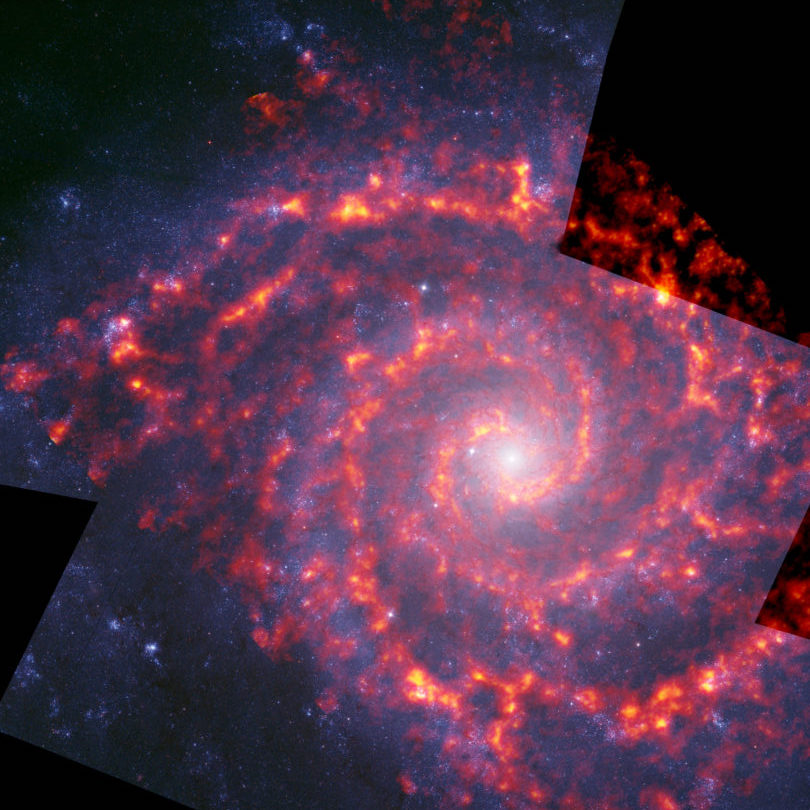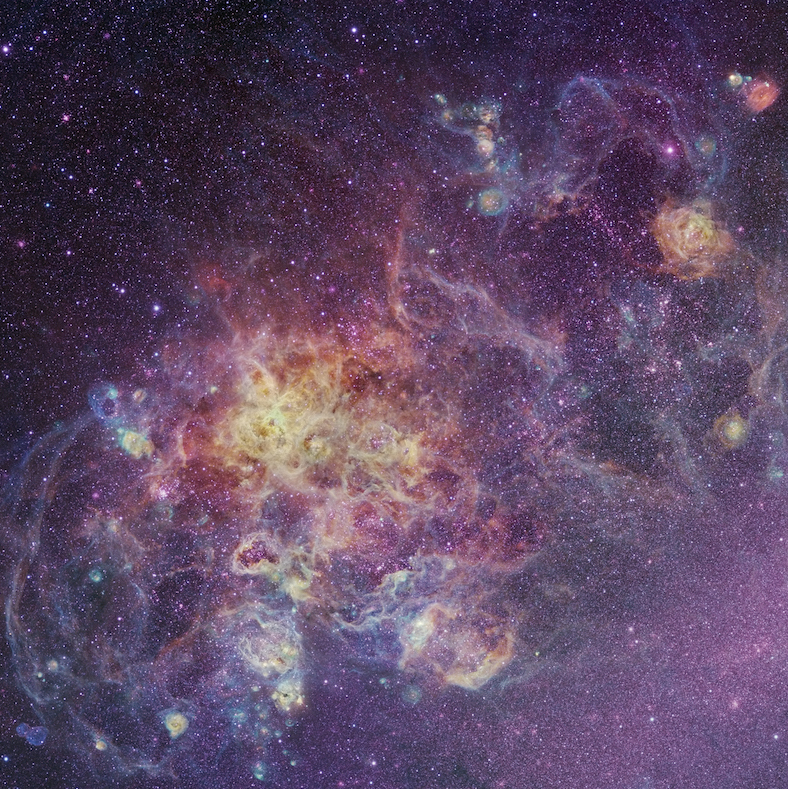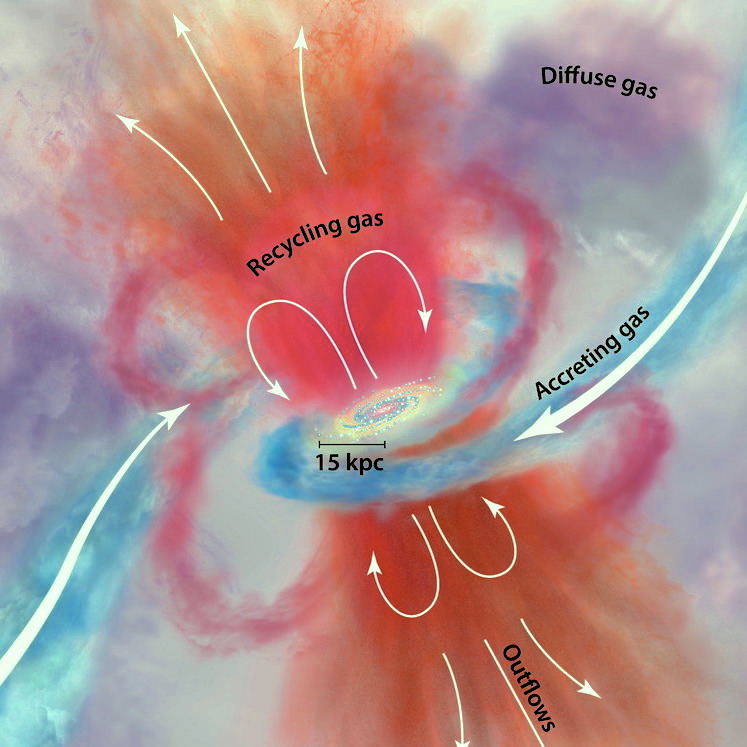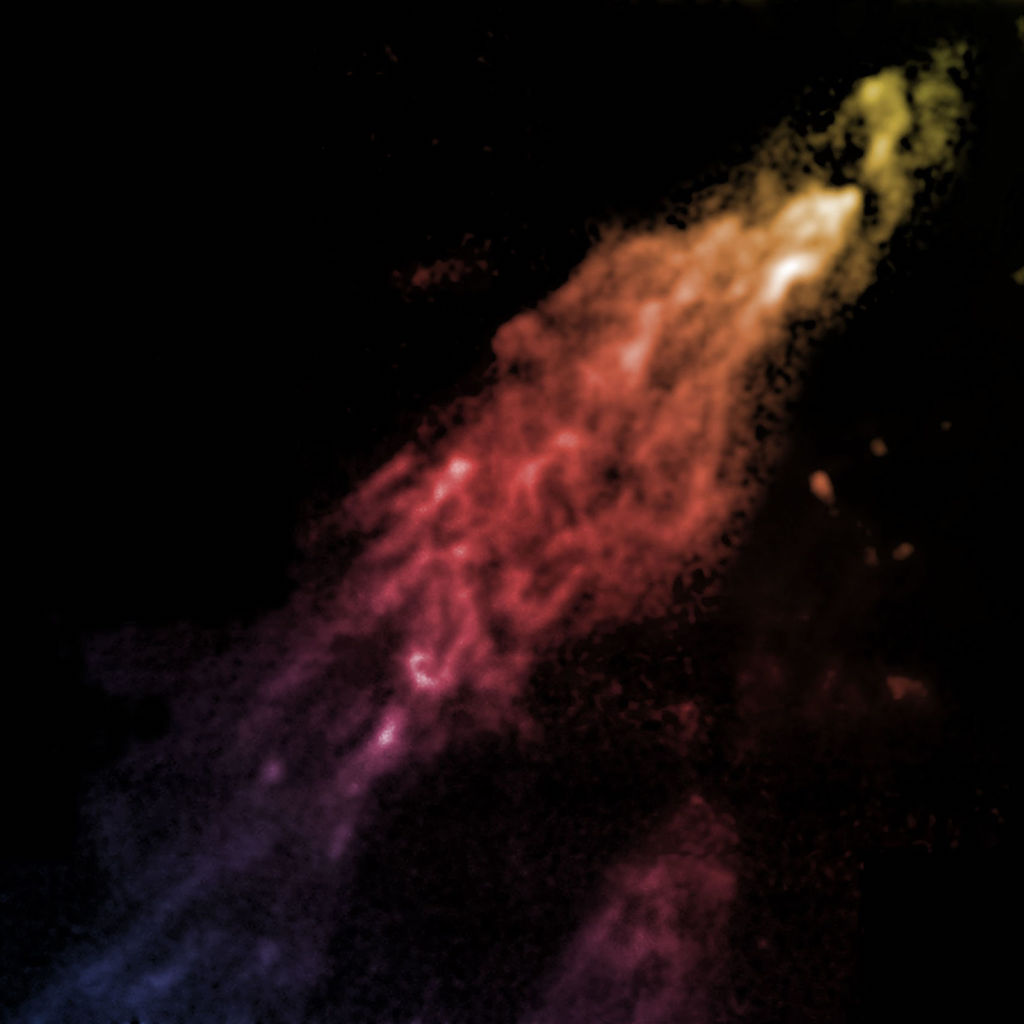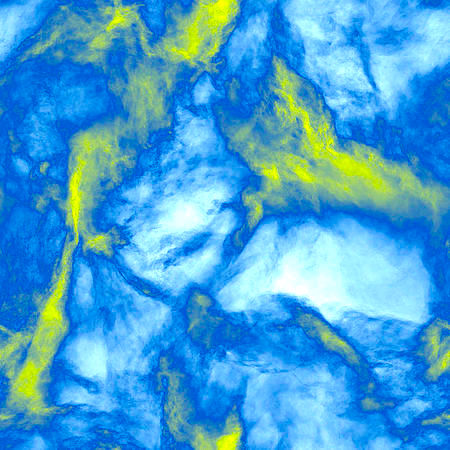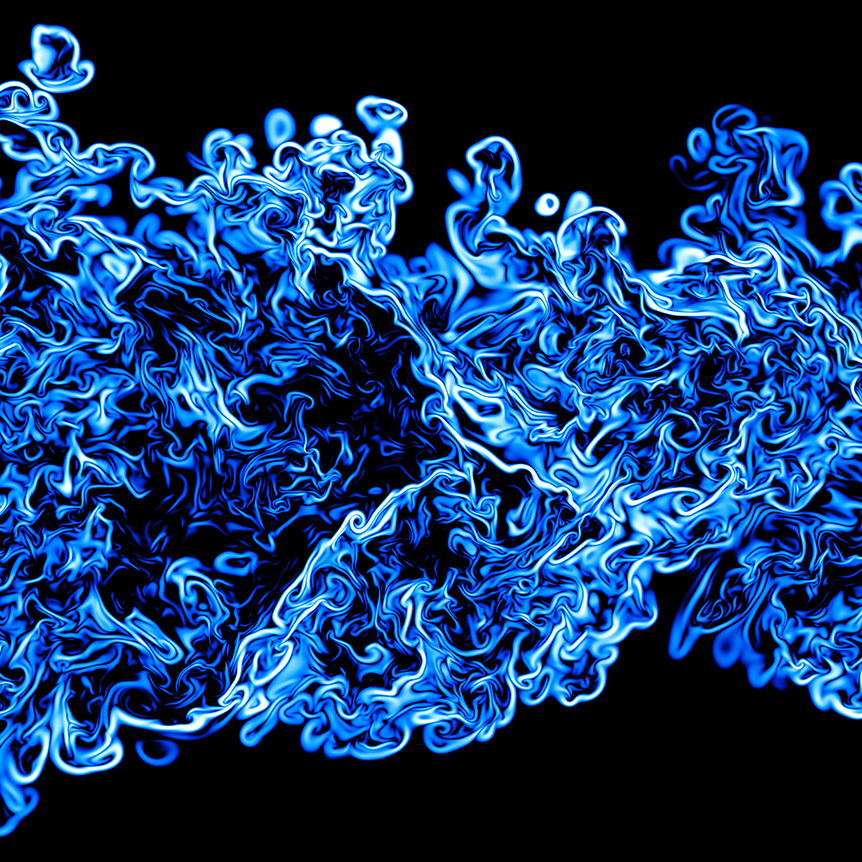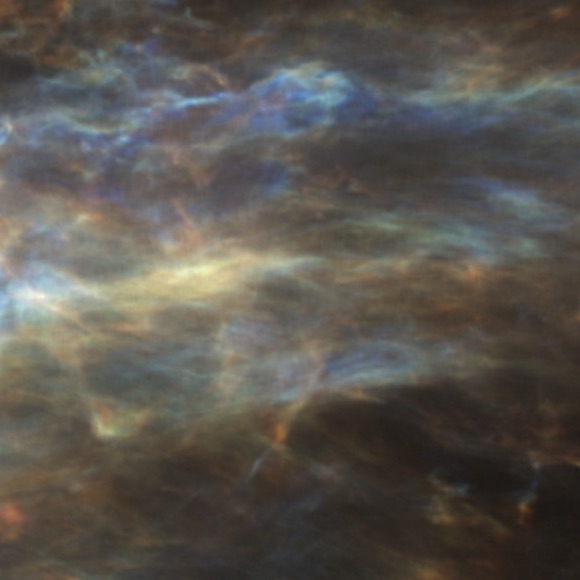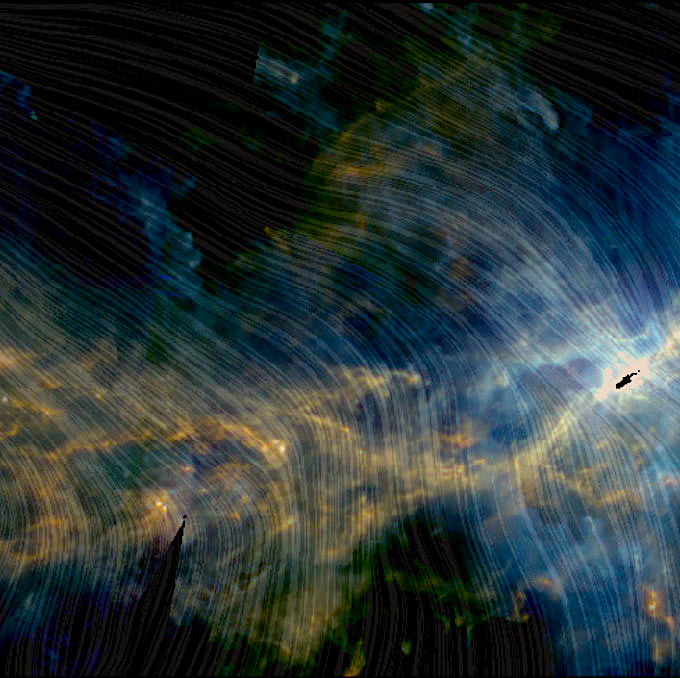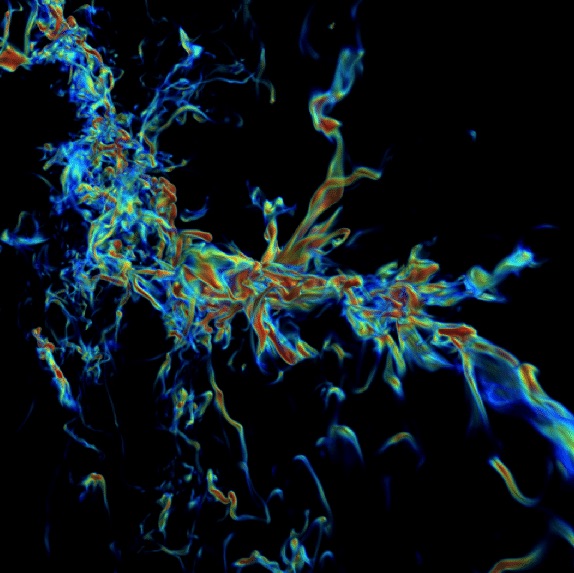The Grand Cascade
The evolution of baryons across scales
The interstellar medium is far from a homogenous atmosphere of galaxies. It is a turbulent, multiphase environment, with dramatic variation in temperature, density, magnetization, ionization, velocity, composition and abundance. How matter evolves in galaxies, from diffuse and hot gas to dense and gravitationally stable structures and then stars, is not clear. In particular how energy, mass and momentum is transported from the circumgalactic medium, to Galactic scales and down to AU scales is still to be understood. This involves understanding the details of matter and energy injection mechanisms at large scales, the interstellar turbulence cascade, phase transitions, various instabilities, as well as the impact of gravity and stellar feedback in the context of the formation of dense gas.
We have made progress in understanding the role and importance of the complex ISM physics in the star formation process by studying these features in groups of clouds in the Galactic disk, in nearby galaxies and in the CGM. Moreover, massive numerical simulations allow the exploration of the complex nonlinear baryon physics. Nevertheless many difficulties rest in obtaining clear and general observational results about the nature of the star formation process in a context of circulation of matter and energy from the halos of galaxies down to molecular clouds. This working session of the Interstellar Institute is devoted to extending the scope of ISM studies to larger scales, looking outside the Milky-Way and at nearby galaxies to better understand the global structure formation process.
Scientific scope
The interstellar medium in nearby galaxies
Nearby galaxies offer an privileged view of the interstellar medium, with no confusion on objects size and distance. The high resolution and sensitivity of modern telescopes now allow to study the detailed physics of star formation and interstellar matter evolution in remote systems. Our neighbouring galaxies also offer opportunities to study the ISM in vastly different physical conditions (e.g., metallicity, feedback...) than what can be done in the Milky Way. During this meeting we will dive into nearby galaxy studies in order to build a bigger picture of star formation, including the impact of galaxy interactions and circumgalactic matter infall on the overall evolution of baryons.
The circumgalactic medium and the disk-halo interface
Understanding galaxy formation and evolution requires to consider gas flows in and around galaxies. The circum-galactic medium (CGM), in particular, is an essential component of a galaxy evolution. Matter falling from the CGM into galaxies provides metal-poor gas that sustains star formation. The ejection of matter in the halo of galaxies by intense star formation activity (the so-called Galactic fountain) acts on the mixing of interstellar matter ad energy over galactic scales. Matter going in and out of galaxies is though to be multi-phase, with a combination of cold and dense structures immersed in diffuse and hot gas. Among the topics we would like to explore is the state of the gas when it enters the disk, how the infall of matter trigger (or suppress) star formation, and how matter and energy are redistributed in the disk exactly.
Interstellar turbulence energy cascade : injection to dissipation
The interstellar turbulence cascade is complex. It is magnetized and multi-phase, it is affected by stellar feedback, self-gravity and infall. Two major elements of the turbulent cascade are the energy injection and dissipation processes. These two bound the inertial range of turbulence, at large and small scales respectively. These processes define spatial and time scales that have important impacts on the way matter evolves and is organised. In particular turbulent energy dissipation might have an important non-linear effect on chemical abundances. Following on the work done at the previous Interstellar Institute sessions, discussion and work will continue to better understand this complexity, from the observational and numerical simulations point of views. In particular we will reflect on observational and numerical experiments that could be conducted in order to better understand and identify the main energetic processes and at which scales they occur.
Condensation and fragmentation : the formation of dense structures
The formation of stars occurs in gravitationnaly bound interstellar structures. The process by which interstellar matter condenses and fragments to reach that state is an essential element of the evolution of baryonic matter in galaxies. This process involves multi-phase and magnetized turbulence, cooling and self-gravity. Many questions are still unresolved. At which scales turbulence transits from subsonic to being dominated by shocks ? What is the relative importance of cooling, self-gravity and supersonic shocks in the structure formation process ? How is magnetic field impacting the structure formation process ? This sessions aims at studying this process in details, by combining numerical simulations, observations across the electro-magnetic spectrum and innovative data analysis techniques.
A session of the Interstellar Institute
at Pascal Institute in Orsay, France
This is the fourth session of the Interstellar Institute. In this session we aim at bringing together pioneering researchers to pose, explore, and answer paramount questions about the nature and evolution of the multiphase ISM in galaxies. Participants covering a large range of expertise (observations, theory, numerical simulations, data science) will be selected in order to foster exploration in data combination, and synthesis with numerical simulations and theory.
These sessions are not typical conferences. They aim at bringing scientists in a single location for a significant amount of time, to exchange and develop new collaborations.
The daily schedule is composed of a few informal talks and most of the time is left open for discussion and collaborative work. The Institut Pascal provides us with 70 desks spread in 40 offices, discussion spaces and seminar rooms. Desks are not reserved so participants are free to share an office with who they want. Each participant is offered the possibility to give a talk or lead a discussion on a specific topic during their stay. These sessions can be seen as a temporary laboratory combining experts on a specific topic. To benefit fully from the experience, participants are invited to stay for as long as they can.
There are no registration fees and participants are offered lunches and coffee breaks during their stay at the Institut Pascal.
INFORMATION UPDATE
(2021-06-27)
Fortunately, the partial re-opening of the European borders is making possible the travel of enough participants to hold the program. We still encourage participant to get vaccinated before coming to Institut Pascal.
The number of on-site participants is significant (more than 20 every week) but there is still some offices available for anybody who would like to join us. We also welcome registration for online participation. You can register here.
The schedule of talks is now available here.
(2021-05-21)
The steady improvement of the situation in Europe and North America, and the recent announcement by the European Union of the possibility for vaccinated visitors to enter Europe, are providing optimism that we will be able to hold a program with enough people on-site and in close to normal conditions.
There are still some places left for on-site participation. You can register here.
In order to work in serene conditions, we encourage participants to get vaccinated before coming to the Institut Pascal.
(2021-04-29)
Following the enthusiastic responses of our internal survey, we have decided to move forward with the organization of the Grand Cascade 2021.
Given the sanitary conditions we are experiencing, the Grand Cascade will be a different session. In order to work in safe conditions, we encourage on-site participants to be vaccinated. In addition, to make sure to have enough participants on site, we have reduced the length of the program from 4 to 3 weeks.
Finally, to include as many participants as possible, an extended online platform will be made available to the registered participants.
- Talks will be streamed live, and online participants will be able to interact and ask questions (chat and video).
- Talks will be recorded and made available for registered participants who can not join live.
- Specific focus discussions (our Salon meetings) will be accessible via Zoom for online participants.
- We plan to make extensive use of a dedicated Slack team for communication between the participants (on-site and online).
- Documents and informations will be shared through a dedicated Notion wiki
Registration
Registration is now closed
For any question, please contact us at "grand-cascade at interstellarinstitute.org"

